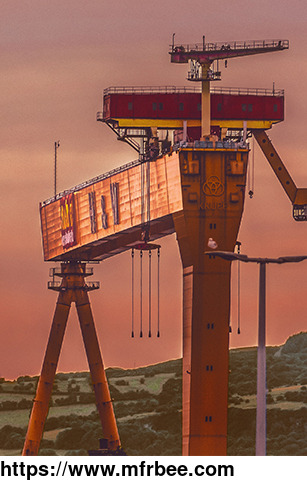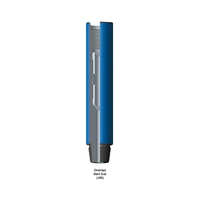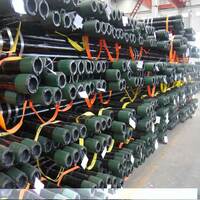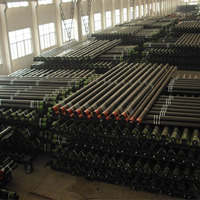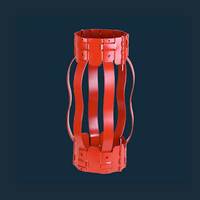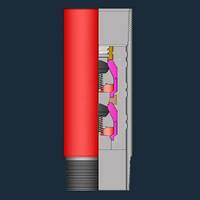Perforated Pipe
Product Quick Detail
- Minimum Order
- 1
- Packaging
- N/A
- Delivery
- 15 Days
Specifications
In the drilling process, in order to prevent the collapse of the hole wall, sand (water), water leakage, or to separate the water layer, the metal or non-metal pipe is used to drill into the
borehole to maintain the drilling and ensure the normal drilling technology. Measures, called Perforated casing holes.
Features of Perforated Pipe:
Casing and perforated completion is the most common type of completion which is selected my many companies. For this completion, a production casing or a liner is cemented through reservoir zone(s)
and subsequently, a well is perforated in order to provide communication between the formation and wellbore.
Perforation should ideally penetrate deeper rather than nearer a wellbore damage zone around a wellbore so fluid from a reservoir can effectively flow into a wellbore. Additionally, several depth
control methods help to accurately select which section of reservoir to be perforated. Hence, undesired zones, such as gas, water or weak formation can be avoided and this will improve well
production efficiency.
Cementing around the wellbore is one of the critical parts for this completion because good cement will effectively isolate all zones and allows a wellbore to produce from several zones without
communication between reservoirs. Moreover, packers are run into a wellbore to isolate reservoir fluid when it flows into a wellbore.
Another important feature of this completion is the ability to selectively produce or inject into any reservoir. A sliding sleeve on each zone can be opened and closed to allow selective production
or injection operation.
Applications of perforated casing pipe:
perforation in the context of oil wells refers to a hole punched in the casing or liner of an oil well to connect it to the reservoir. Creating a channel between the pay zone and the wellbore to
cause oil and gas to flow to the wellbore easily. In cased hole completions, the well will be drilled down past the section of the formation desired for production and will have casing or a liner
run in separating the formation from the well bore. The final stage of the completion will involve running in perforating guns, a string of shaped charges, down to the desired depth and firing them
to perforate the casing or liner. A typical perforating gun can carry many dozens of explosive charges.
Commonly, perforation guns are run on E-line as it is traditional to use electrical signals from the surface to fire the guns. In more highly deviated wells, coiled tubingmay be used. Newer
technologies allow the guns to be run on slickline. Modern slickline technology embeds fiber optic lines that can transmit two-way data on real-time temperature, pressure and seismic responses
along the length of the slickline. This information allows very precise operations of various down-hole tools, including perforation guns.
The benefit of this strategy is greater control of the well. Casing the bottom of the hole allows the well to be completed without having to worry about reservoir fluids. It also allows precise
selection of where in the formation production will be and to be able to seal off perforations, which are no longer useful or counterproductive, through cementing or straddling.
The disadvantage is that perforating can lead to "skin damage", where debris from the perforations can hinder productivity of the well. In order to mitigate this, perforating is commonly done
underbalanced (lower pressure in the well bore than in the formation) as the lower well bore pressure will cause a surge of fluids into the well at the point of perforating, hopefully carrying the
debris with it. Other methods of stimulation such as acidising and proppant fracturing are often required to overcome this damage and bring the well up to its full potential.
Casing and perforating as a method of completion is common place nowadays, though in some unconsolidated formations prone to production of sand (BP Harding as an example), open hole completions
using only sandscreens may be the preferred choice.
Oil Well Perforation may be basically classified in two types a) Overbalanced Perforating and b) Underbalanced Perforating. Overbalanced perforating is normally carried out with the help of
Perforating Guns or Hollow carriers. In Overbalanced Perforation the weight of the Well-bore Column is more than the Reservoir Pressure, thus it normally ensures that the Well does not start
flowing oil or gas immediately after perforation. However, it may have the effect of damaging the formation due to forced entry of well-bore fluid (mud) into the reservoir.
Technical Specifications of Perforated Pipe:
Perforated casing is manufacturing with API casing, joints with size up to diameter 20"and length R3. Every joints perforated is deburred internal and external. Upon request,we can drill standard
or customized hole size in any number and nay patter.
Pipe Size Holes per feet Size of hole Perforated Area per Feet
3/4" 78 3/16" 2.15
1" 54 5/16" 4.14
1-1/4" 66 5/16" 5.06
1-1/2" 78 5/16" 5.98
2-1/16" 78 5/16" 5.98
2-3/8" 90 3/8" 9.94
2-7/8" 102 3/8" 11.26
3-1/2" 126 3/8" 13.91
4" 138 3/8" 15.24
4-1/2" 150 3/8" 16.56
5" 162 3/8" 17.88
5-1/2" 174 3/8" 19.21
6-5/8" 186 3/8" 20.53
7" 222 3/8" 24.51
9-5/8" 294 3/8" 32.46
As one of the most professional perforated pipe manufacturers, Saigao Group provides cement basket drilling, perforated casing completion, oilfield cementing tools and etc. Saigao products are not
only popular in China, but also exported to Russia, Brazil, Australia, South Africa and other countries and regions.
- Country: China (Mainland)
- Business Type:
- Market:
- Founded Year:2008
- Address:Zhongrun Century Center, No 12111,Jingshi Road, Lixia District, Jinan City, Shandong Province. P.R. China
- Contact:Rex Liu
Other products from Shandong Saigao Group Corporation
Relate products of Perforated Pipe
Decorative Perforated Metal
Hebei Qijie Wire Mesh MFG Co., Ltd. specializes in decorative perforated metal sheets, ideal for building facades, wall decorations, indoor partitions, ceilings, sliding doors, and handrail infills. Our range includes Decorative Punching Perforated Metal and Laser Cutting ...
Diameter 28mm 0.7mm thickness coated pipe.
灵活轻便的 4 米标准长度 ABS 精益管,适用于精益管道系统 我们是精益管生产厂家,产品工厂直销,价格低,出货量大,是经销商的最佳选择。精益管是由特种复合钢管和表面塑料组成,外层一般为PE ...
The third generation lean pipe aluminum alloy pipe
适用于 Karakuri 系统的直径 43 毫米标准尺寸 1.7 毫米厚度阳极氧化铝合金管。 我们是铝管生产厂家,产品工厂直销,价格低,出货量大,是经销商的最佳选择。 ...
